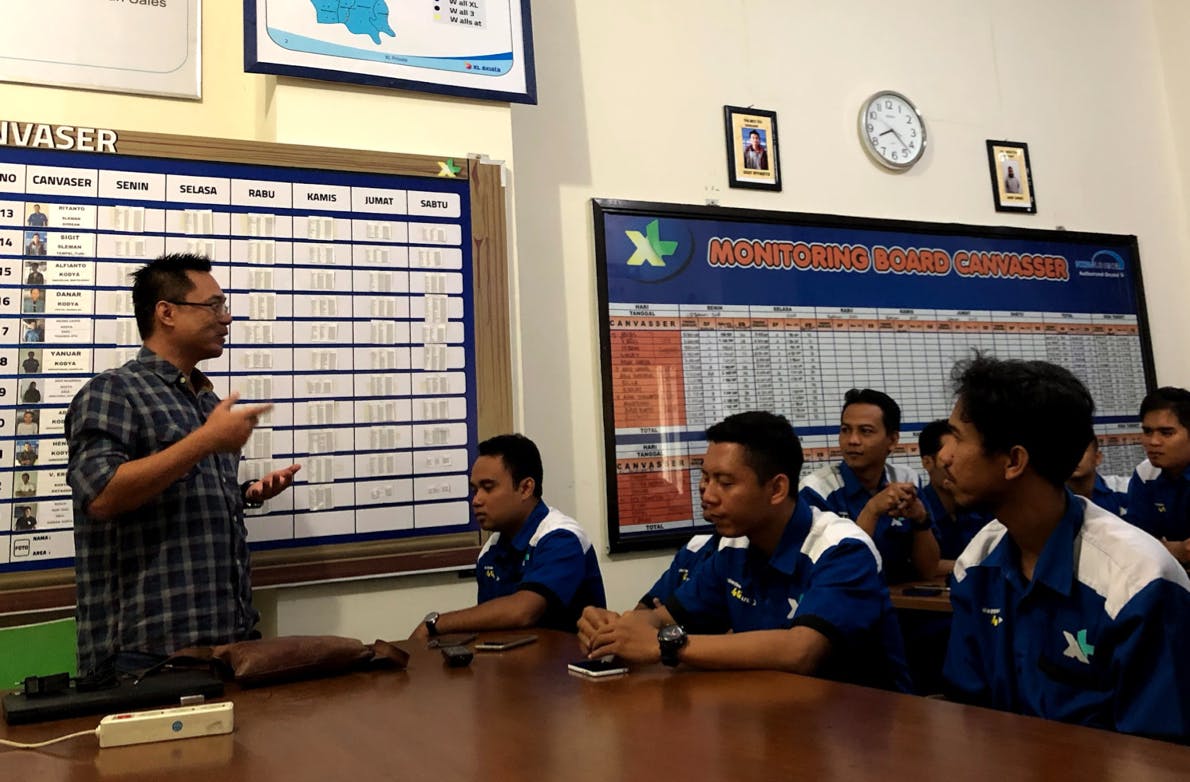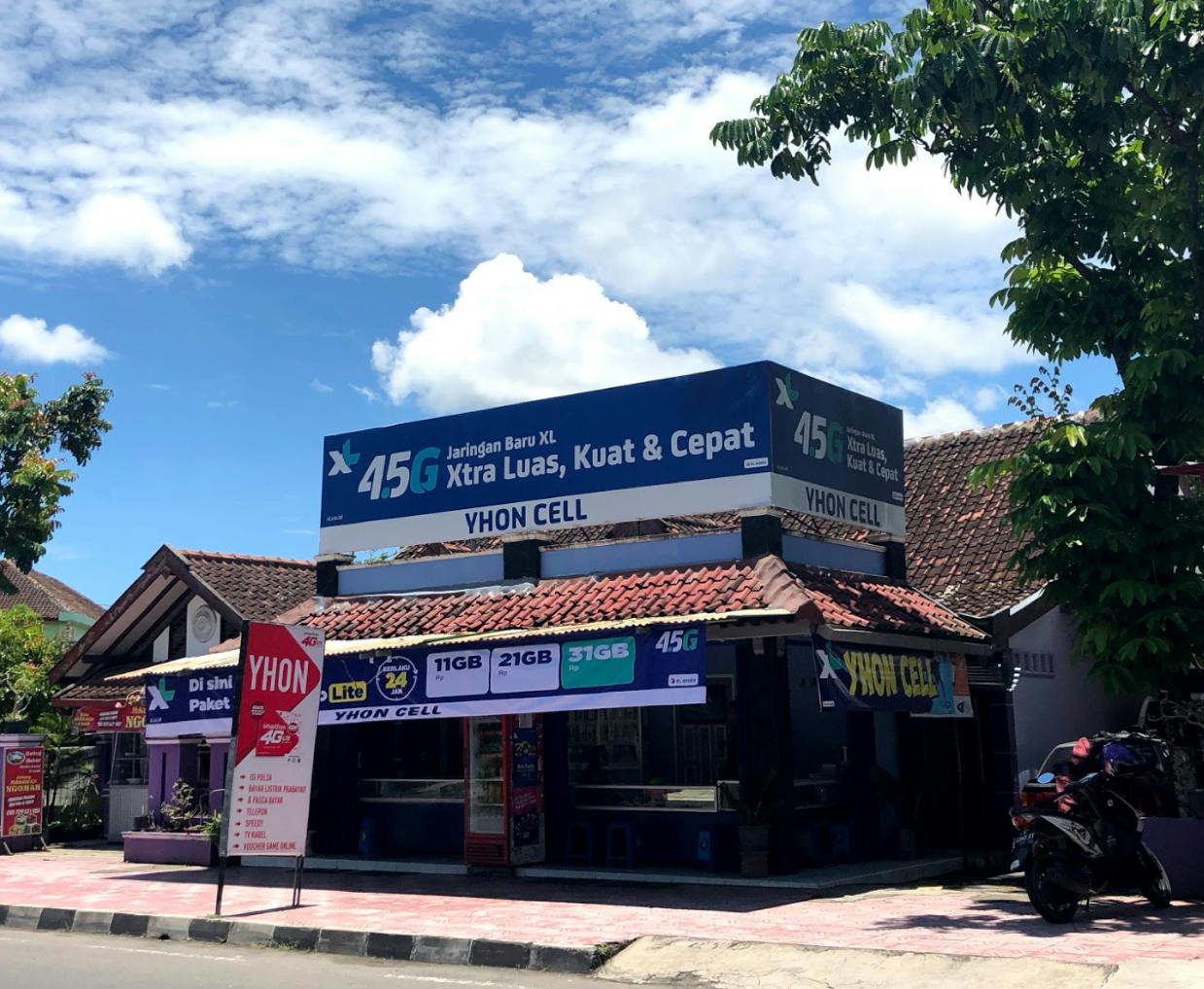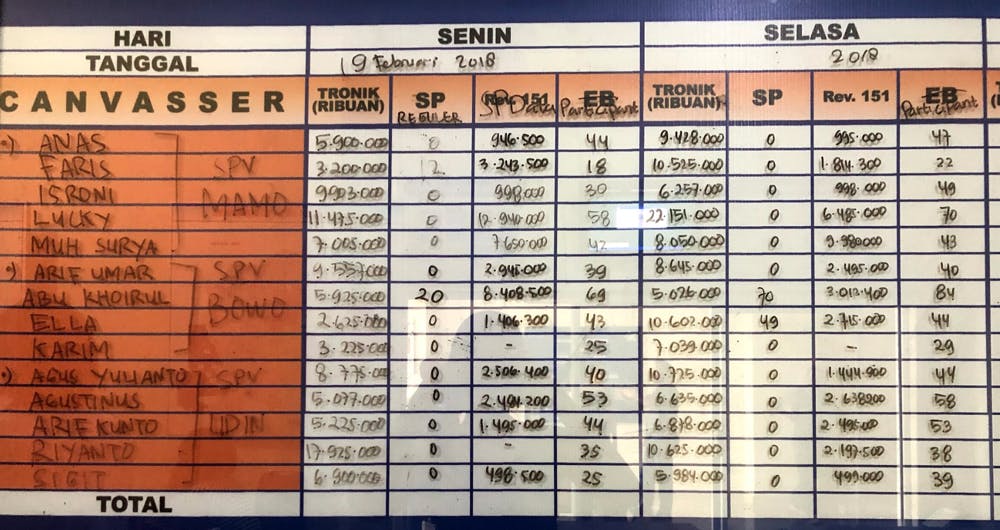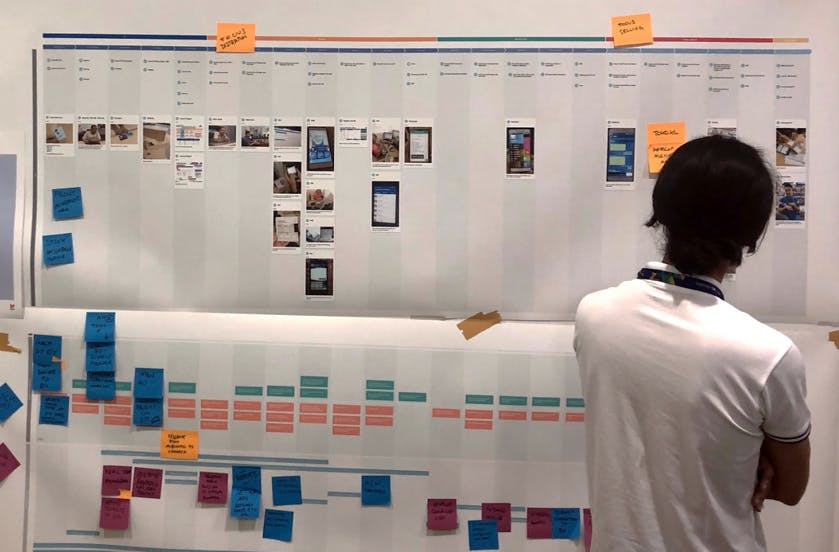To come up with a clever way to understand what happens with millions of SIM cards that are sold through third parties
MING Labs Case Study: XL Axiata – The Indonesian connection
XL Axiata: The Indonesian connection
How we helped a big telecom provider find out how their SIM cards are sold and used

The app is available in the app store. We got way more downloads than expected and 8x amount of actual users according to the target
Field research, opportunity mapping, business design, UX design, development, mobile application
XL Axiata wanted to understand their distribution network — to get data, to get insights, to understand precisely what’s going on with their SIM card sales, and how to adjust their offers to better suit the needs of the customer in the real-world.
Among other things, XL Axiata sells SIM cards throughout Indonesia, a wonderful country in Southeast Asia with a population of 264 million people living. What’s particularly interestingand relevant to this project is the number of islands: between 16,056 and 17,508, depending on your sources. Apparently, counting islands is not as straightforward as one would think. You can quickly see that the combination of all geographical features — country size, terrain, etc. — instantly turns the logistics of delivering of your products into a logistical nightmare.

XL Axiata operates only about 300 of its own retail stores, and relies on the network of third-party wholesalers, distributors and retailers to sell their SIM cards. The more entities involved, the more convoluted the process becomes; or, to put it simply, it’s challenginga mess! There is next to no visibility, you don’t know who you’re actually selling to, how these SIM cards end up being used and what the most popular plans are.

We started with a Discovery Sprint that lasted three weeks and involved plenty of workmostly research, doing workshops with the client, developing roles and personas, and supporting long field trips around some exotic places in remote areas of Indonesia.
Traveling through Indonesia helped us settle the debate that we’ve been having throughout our entire lives: How many people can one motorbike fit simultaneously? The answer, according to our observations, is six.
We were visiting major dealers in Jakarta and outskirts, Makassar, and Yogyakarta, interviewing the owners and/or employees of all these tiny shops — who were some of the nicest and most helpful people. Some of the places we visited are far from the cityscapes we envisage to find XL Axiata Retail Stores. Many of the outlets are tiny villages; some are just a few houses next to a road in the middle of nowhere. And these are not standalone stores, as you might imagine reading this in London or Paris or New York. Rather, it’s a family home, where most families earn their livelihood selling fresh homemade food in one corner and SIM cards in another.

This kind of field research massively helps to cut the gap, the disconnect, that is always there, between the suits in corporate headquarters in air-conditioned skyscrapers — and the reality of the business; how products exist in the context of real life; in the context of the lives of real people.
This might not be sexy and might not match the brand and marketing strategy; but when you’re doing design, you have to work with the facts.
Massive thanks to the client for setting this up and organizing the whole trip — we would never have managed to do this ourselves simply because of the language barrier, aside from twenty-five other reasons.
The people who are selling the SIM cards were telling us some quite interesting ideas how to automate the process — how to get around the weird complex logistics of registering a SIM card that we witnessed and make it more convenient for their customers. Massively insightful, really.

We brought back everything we gathered throughout two weeks to the client’s HQ in Jakarta and got to work, of which there was a lot.
We spent three weeks on processing what we learned, both from the client during our workshops and from the actual customers during the field research. There were some remarkable findings: for example, conflicting KPIs (dealers had other incentives than their employees) and broken loyalty programs (it would take a dealer up to 10 minutes to redeem their points, taking up valuable hours of their working day).
After synthesizing the research results, we came up with 15 suggestions on various initiatives for getting and revealing the hidden data.

The idea that we thought the best was to focus on real-time provisioning. To assess the feasibility of this solution, we talked with a bunch of company stakeholders from logistics, marketing, law, compliance, data analytics, etc. Based on these findings, we created a risk impact analysis and a SWOT that revealed the strengths, weaknesses, threats and opportunities for XL Axiata.
The obvious downside of real-time provisioning was that it would require at least one year of implementation. So the client decided to opt for an easier short-term solution, which was: to build a mobile app for the retailers and wholesalers.
To get the data literally out of nowhere, we built a mobile app for retailers and wholesalers to simplify ordering and provisioning SIM cards from XL Axiata. The plan was to make it easier for them to order the cards, and if this was to work, then our client would get the precious data they were after – and get out of the black box they were stuck in.

The project was officially done in Jan 2019, and then we got two more projects that are too early to speak about at the time of writing – but they’ll certainly appear on this page later on, as we keep working with XL Axiata on more projects.
Once again we saw that digital transformation is all about people. It’s vital to make people aware why change is needed, and carefully guide them from the old world to the new digital one. Your job as a designer is to teach them new skills and, most importantly, to dissolve their fears that they would become irrelevant in the new digital world. If you don’t do this, they will always pull you back in the process and block innovative ideas — out of fear to lose their job and position in the company.


"MING Labs helped us encounter areas of real innovation by conducting a thorough market and user research. They worked with us to develop a product fitted to market needs and we got great response from our users."
XL Axiata: Linda Sessa — head of digital transformation; Pedro Custodio — head of design and innovation; MING Labs: Sebastian Mueller — chief operating officer; André Gomes — project manager; Martina Maitan, Jennifer Bin — UX researchers; Dina Tagabergenova — business designer; Martina Maitan, Jian He — UX designers; Thinkey Xin — chief technology officer; Erica Li — project manager; Kenneth Dai — technical project manager; Julius Zhu — developer.